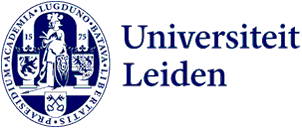
Children from multi-parent families do not have legal protection
Promotie image: Pexels
In families where more than two people assume the role of parent, not all of these parents have legal status. This causes problems, particularly with inheritance law, says PhD candidate Michelle Michels.
Multi-parent families come in different shapes and sizes. With intentional multi-parentage, the decision is made before the child is born that more than two people will assume the role of parent: for instance, a lesbian couple and a gay couple who will raise a child together. Non-intentional multi-parentage mainly occurs when two parents divorce and find new partners. However, in the Netherlands a child can have a maximum of two legal parents.
Not all parents being legally recognised causes various problems, says Michels, who is researching multi-parentage and inheritance law. In the Netherlands, children automatically inherit from their legal parents and are, in principle, entitled to a minimum share of this estate, the child’s share. But these legal provisions do not apply to non-legal parents in multi-parent families. They have to arrange their child’s inheritance in a will. ‘That takes time and money and requires a certain amount of knowledge’, says Michels. ‘And if the non-legal parents choose not to include a child in their will, the child ends up empty-handed.’
These families also experience problems with parental responsibility. Non-legal parents are not officially allowed to make decisions about the child’s education or medical treatment.
Political developments
To address these problems, a state committee advised in 2016 for legal recognition of intentional multi-parentage to allow children to have more than two legal parents. Michels explored the effects of such legislation on inheritance law and inheritance and gift tax. Teun Struycken (Minister for Legal Protection) announced earlier this month that this legislation will not be introduced for the time being. He thinks it is too expensive and complicated to implement. ‘This means that the children are not protected and families will continue to face the same problems’, says Michels. ‘My research shows that the changes needed to the law are not that difficult to make. The choice being made is because of the political climate and the new administration’s priorities.’
Advice to parents
How can parents make effective multi-parentage arrangements? ‘As a parent you can play with existing law’, says Michels. For intentional multi-parentage she advises documenting everything before conception. ‘That applies to your estate as well as to agreements on how the child will be raised, for example. Put everything down on paper and make sure it is legally valid.’
Michels also points to the options within current law for legal parent status. She gives the example of how a family comprising a lesbian and a gay couple can choose the legal parents strategically. If they identify one person from each couple as a legal parent (for example, one mother and one father), all four parents will have more rights and responsibilities than if only the two mothers are designated as the legal parents.
Children’s relationships deserve more attention
The discussion on multi-parent families is now mainly about the parent-child relationship. But equally important is the relationship between the children in such families, says Michels. ‘That doesn’t receive much attention. The relationship between the children is not protected in the same way as the relationship between siblings who, in the eyes of the law, have one or two parents in common. If parents separate, and the children have different legal parents, the children officially have nothing to do with each other. This can mean they no longer see each other, particularly if the parents separate on bad terms.’
Michels remains hopeful that legislation to protect multi-parent families will come. ‘You often see that it takes a while for society to accept such developments in family law. But legislation comes in the end.’
